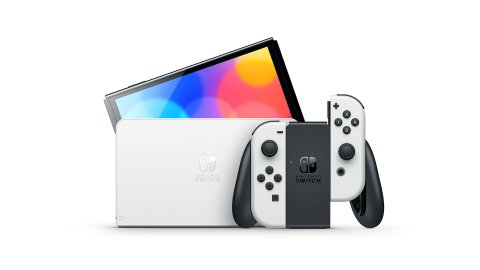
Nintendo Switch OLED
Nintendo Switch OLED is upon us and new video materials and insights are beginning to emerge on the new version of the Nintendo console, such as this interesting video comparison with the standard console carried out by Nintendo Prime, along with another unboxing of the device.We have already seen a first unboxing coming from Japan, while this comes in English from Nintendo Prime and appears a bit more traditional than the oddities of the previous one. However, what proves most interesting is the direct comparison made towards half of the video with the standard version of Nintendo Switch.
This is an off-screen movie, therefore not exactly ideal for making the most of the quality of the new OLED display, since everything is filtered by the video camera and then further compressed by YouTube, but already in these conditions it is possible to notice some differences between the two Nintendo Switch models.
The Nintendo Switch OLED here it is also present in the white version, exclusively available with the new model: you can see a particular brightness and contrast of the image, but you must also consider the different angle with which the two consoles are framed.
The difference what emerges most seems to be the peak brightness and the quality of the colors, although also on this aspect we have to see what the settings were in the video and how much it affects the fact that and the screens are filmed through a video camera and not directly from the video output. In any case, the glance is truly remarkable, even if only for the greater width of the display which actually creates a certain difference with the previous model.
For a practical test, instead, we refer you to the test of Metroid Dread on Nintendo Switch OLED.
Have you noticed any errors?
Nintendo Switch OLED hands-on: The best upgrade may not be the screen
 © Dan Ackerman/CNET
© Dan Ackerman/CNETAfter getting my hands on the new OLED-screen version of the Nintendo Switch, one major upgrade stood out to me as a game-changer, and it wasn't the larger, richer OLED screen.
At a small hands-on (and masks-on) preview event for both the OLED Switch and the upcoming game Metroid Dread, I had about an hour to play with the new hardware in handheld mode. It was immediately obvious that the new screen is a big deal. It's bigger, the bezels are slimmer, and of course, the OLED display looks great compared to the original, which can appear washed out, especially compared to super bright iPhone and iPad screens.
The Joy-Con controllers are the same, and the body is almost the same size, but the better screen-to-bezel ratio made it feel like a more modern device.
Internally, it's the same Nvidia Tegra X1 processor and has the same 720-line resolution. Docked output is still 1080p. The base storage jumps from 32GB to 64GB. The increase in storage and display size takes the price up from $300 to $350. (In comparison, an Oculus Quest 2 with 128GB of storage is still $300.) There are improved speakers, too.
Nintendo Switch OLED: $350 at GameStopNintendo Switch OLED's best upgrade isn't the screen
SHARE
SHARE
TWEET
SHARE
Click to expand
But even at this limited hands-on demo event, there was something else about the new Switch that jumped out to me. The kickstand on the back of the system, previously mocked for its wimpy construction, has been completely replaced.
 © Provided by CNET The new kickstand steals the show. Dan Ackerman/CNET
© Provided by CNET The new kickstand steals the show. Dan Ackerman/CNETInstead of a wobbly strip less than one inch wide, the new kickstand runs almost the entire width of the system. Instead of snapping into one position, locked in at a specific angle, it's highly adjustable and stays put at any angle along the way.
Read more: Metroid Dread is a great companion game for the Switch OLED
If that sounds familiar, it's because this is basically the Microsoft Surface kickstand, adapted for the Switch. That kickstand was one of the best design features of the Surface line (recently updated to the Surface Pro 8) and now it's one of the best features on the new OLED Switch.
 © Provided by CNET Dan Ackerman/CNET
© Provided by CNET Dan Ackerman/CNETThe Switch can be played docked to output to a TV or as a handheld. But this new model seems particularly suited to being a little multiplayer mini console: The larger screen and better kickstand make this OLED Switch far better for gathering around with friends.
Especially if you're planning on using the new Switch in handheld mode, and occasionally propping it up on a table or desk (or an in-flight tray table), it's great. I played about an hour of Metroid Dread this way, switching between holding the system in my hands and deploying the kickstand on the table. I didn't get a chance to examine the new dock in person, but the main difference there is that it swaps one USB port for an Ethernet jack.
The Nintendo Switch OLED goes on sale Oct. 8, just in time for the start of the holiday shopping season. Stay tuned for a full review sometime in the coming weeks.